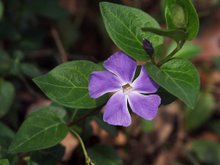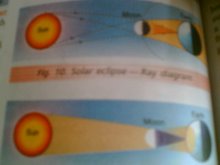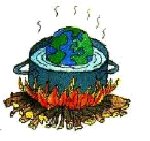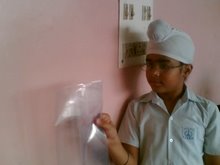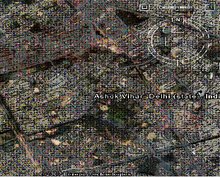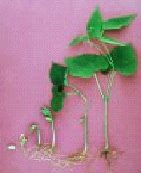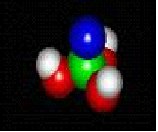Manufactured Fabrics are usually made of filaments extruded as liquid and formed into various fibers. Because the fiber starts as a liquid, many of the fibers are colored before they become filament, thus they are difficult to dye after the fiber is woven into a fabric.
ACETATE is not a strong fiber but can be extruded into fibers of different diameter and woven into fabrics that have the luxurious look of silk but do not wear like silk. Acetate does not absorb moisture readily but dries fast and resists shrinking. This is a resilient fabric that resists wrinkling in addition to being pliable and soft with a good drape. Triacetate is an improved acetate fabric which doesn’t melt as easier and is easier to care for. Remember, acetate in nail polish and nail polish remover will melt acetate as will alcohol so take care with perfumes and nail products including SuperGlue.
ACRYLIC is a fine soft and luxurious fabric with the bulk and hand of wool. Light weight and springy, this fabric is non-allergenic, dries quickly, draws moisture away from the body and is washable. Acrylic does not take even a moderate amount of heat. Modacrylics are used in pile fabrics like fake fur and are more flame resistant.
LASTEX is an elastic fiber made from Latex. It is most often used with other fibers to create fabrics such as Spandex and foundation garments. Lastex will deteriorate after repeated washing and drying, losing its elasticity.
NYLON became a household word in 1940 when it was knitted into hosiery. In 1942 it was called into service for the armed forces use in parachutes, flak vests, combat uniforms, tires and many other vital military uses. Until the war was over nylon was not available to the public. Nylon became one of the most versatile fibers of the man-made fabrics. In addition to hosiery, nylon is used in tricot, netting for bridal veils, and in carpeting.
Nylon is stronger yet weighs less than any other commonly used fiber. It is elastic and resilient and responsive to heat setting. Nylon fibers are smooth, non-absorbent and dry quickly. Dirt doesn’t cling to this smooth fiber nor is it weakened by chemicals and perspiration. Extensive washing and drying in an automatic dryer can eventually cause piling. Nylon whites should be washed separately to avoid graying. This fabric may yellow so it should be bleached frequently with sodium perborate bleach.
Nylon melts at high temperatures. If ironing is necessary, always use a low temperature on the wrong side.
POLYESTER is a strong fiber that is resistant to crease and thus keeps it shape. Polyester melts at medium to high temperatures. Although many people dislike polyester, perhaps due to the double knit fad of the 1950, polyester remains a versatile and important man-made fabric. Blends of polyester give cotton a permanent press property and extend the wear of these blended garments.
Polyester is manufactured in many weights including fiber-fill used in pillows and upholstery. Threads spun from polyester fibers are strong, wear exceptionally well, and are used extensively in home sewing and manufactured sewing.
RAYON, from cellulose, has many of the qualities of cotton, a natural cellulose fiber. Rayon is strong, extremely absorbent, comes in a variety of qualities and weights, and can be made to resemble natural fabrics. Rayon does not melt but burns at high temperatures.
Rayon drapes well, has a soft, silky hand, and has a smooth, napped, or bulky surface. Rayon will wrinkle easily and may stretch when wet and shrink when washed.
Technological advancemnts to the rayon process have produced high wet modulus [HWM] rayons such as lyocell and modal which makes fabric less prone to stretch when damp or wet.
Washable rayon will state the care on the fabric label. Like silk, if you pre-wash rayon fabric prior to construction of the garment, you have a washable garment.
Glossary of Rayon Fabrics
Fibranne is French term for Viscose rayon.
Velvet, although made from silk, is most often produced from the rayon fiber.
SPANDEX is an elastic type fiber that can be stretched many times its length and then spring back to the original length. Spandex is more resistant to washing, perspiration, and heat than latex. Spandex is used in foundation garments and hosiery.
Friday, 29 January 2010
NATURAL FABRICS
NATURAL FABRICS are created from fibers of animals coats, silkworm cocoons, and plants' seeds, leaves, and stems. Click on the natural fiber below for information on each fiber and their weaves.
Wool - Fibers from animal coats: Sheep, goats, rabbits, alpacas, llama...
Cotton - Fibers from the cotton plant’s seed pod
Silk - Fibers from the cocoon of the silkworm
Linen - Linen is from flax, a bast fiber taken from the stalk of the plant
Hemp, Ramie, and Jute - All of these are similar to linen but the plants are processed slightly differently.
--------------------------------------------------------------------------------
Wool - Fibers from animal coats: Sheep, goats, rabbits, alpacas, llama...
Cotton - Fibers from the cotton plant’s seed pod
Silk - Fibers from the cocoon of the silkworm
Linen - Linen is from flax, a bast fiber taken from the stalk of the plant
Hemp, Ramie, and Jute - All of these are similar to linen but the plants are processed slightly differently.
--------------------------------------------------------------------------------
FABRIC CARE
Generally, the best rule is to follow the care instructions on the manufacturer’s label. If there is no label and/or you wish to wash a garment or fabric at home instead of dry clean, the properties of each fabric will help you determine the care of the fabric or garment.
Dry Cleaning is by definition, cleaning with solvents and little or no water. The combination of solvents and heat is hard on fabrics and may cause as much wear as actual wearing of the garment. Perchlorethylene, the cleaning fluid used by most dry cleaners, is the most effective cleaner so far for most all types of fabrics. However, "perc" as it is called in the dry-cleaning industry is classified as a hazardous air pollutant by the Clean Air Act. Perc is toxic. Dry cleaning customers should take their garments out of the plastic bags and air their garments after dry cleaning.
You, the consumer, can inform yourself when selecting a dry cleaner. Common sense will cover the basic questions such as the appearance of the dry cleaning store - - - Is it neat and clean or dirty and cluttered? Is the location convenient and are they open when you need to drop of or pick up your dry cleaning?
Technical considerations include solvent purity. Solvent must be distilled to remove greases, oils, waxes and dyes. Poor solvent purity or quality can result in an objectionable odor in the garment and a "graying" of white clothing.
Pressing after cleaning should also be considered. Most anyone can press wool pants but it takes a skilled professional presser to do a quality job on linen and silk items. If the dry cleaner cannot explain the difference in pressing linen and silk versus wool directly and authoritatively, it is doubtful that these garments will be handled with the care they require. Linen can withstand higher heat when ironed, and should be pressed when damp. Silk requires a lower temperature iron and should be steam ironed, preferably with a press cloth. Wool should be pressed with steam and a moderate temperature.
Packaging of the cleaned garment is also important. A garment can be cleaned and pressed well but if it is jammed into a small bag, it can become a wrinkled mess. Jamming too many finished and bagged garments into the dry cleaners rack can also wrinkle finished garments.
Finally, develop a dialogue with your dry cleaner. Note the type of stains that you have on your garment and list it for the dry cleaner. Their pre-spotting will help eliminate stains that could otherwise be heat set after the garment is cleaned.
Be an informed and fair consumer. Not all spots can be removed especially if you, the consumer, have pressed the stain into the fabric. Many stains can be heat set. Garment care is the responsibility of both you and your dry cleaner.
Wet Cleaning is described as a new process by some cleaning establishments. They advertise that their process will replace dry cleaning and the environmentally dangerous solvents they use. However, until this process is perfected and proven to effectively replace dry cleaning, caution should be used by the consumer. Wet cleaning is accomplished by using water based chemicals. Some cleaning establishments actually claim to have this service but just hand wash the garment and then professionally press the garment. This process works well with some fabrics which have manufacturers labels stating "hand wash". Garments with labels printed "dry clean only" may shrink, fade, or wrinkle so badly that pressing does not restore then original look of the fabric.
New "wet cleaning" stores are available in some areas. The "wet cleaning" process involves computer controlled machines, soap, conditioners and finishers. This new process is supposed to replace dry cleaning. However, until the wet cleaning process has been thoroughly tested, care should be taken before taking your favorite "dry clean only" garments to the new establishments. Outer fabric, interfacings, linings, shoulder pads, and finishes all react differently when washed. Some fabrics shrink or change shape when washed. Some shoulder pads are designed for dry cleaning only and may fall apart when washed.
Professional laundering is offered by most dry cleaners. Washable garments are professionally washed and pressed. Men’s and women’s shirts are often bleached and starched according to the manufacturers label. Some of the laundering is done with very hot water which may shrink the interfacing or stiffening used in collars and cuffs. Less expensive garments may use interfacing that either shrinks or comes loose with very hot water. These garments cannot be fixed.
Starching shirts and other cotton or cotton/polyester garments is common. The basic function of starch is to stiffen the garment. Incidental use is to prevent stains from penetrating the fiber. However, starch leaves minute crystals in the fiber and can often wear the garment out faster than a garment that has not been starched. The choice is then appearance versus longer life for your garment.
Home Laundering is not only easier to control but can add life to your garments. Choosing a detergent for home laundering is a daunting task!
Detergents are chemical compounds that contain wetting agents and emulsifiers. Technically detergents are called "Synthetic Detergents" as they are not made from fats and lye from which soap is made. Generally the labels on the detergent inform you, the consumer, and make the choice easier.
General purpose laundry detergents work well on most washable fabrics. Some detergents take more product for each wash as fillers are used by the detergent manufacture. Recently, detergent companies have started to reduce the amount of fillers in their products, thus the amount of detergent required per load of laundry is less. Read the label to determine various additives. Added bleach may gradually remove the dyes or color unless the garment is colorfast to bleach. Most all detergents have "surfactants" this is nothing new. Whiteners can be either bleach or bluing agents. More expensive is not always better.
Soap is not the same as detergents. All detergents are soaps but not all soaps are detergents. Confused? Soap was first used in 600 BC Soap was first made by boiling goat fat, water, and ash high in potassium carbonate. Although soap has been improved over the years, it still leaves a deposit we call "soap scum" in the shower and bath. This scum is difficult to remove from fabrics if soap is used in the laundry.
Chlorine bleaches can safely be used on cotton, cotton/polyester and some man made fabrics. Consult the garment care label or properties of individual fibers listed in this booklet.
Hand washing detergents can be used for home laundry when cleaning fine fabrics. These products are often effective when using cold water. However, not all hand washing detergents are milder than regular laundry products although they are often more expensive. Properties to look for when using hand washing detergents include use in cold water, quick dissolving in cold water, and complete rinsing of the detergent after the wash.
To test hand washing detergents or any detergent, dissolve recommended amount of detergent in a quart of cold water. Allow the detergent and water to sit for 24 hours. Note the residue, if any, in the bottom of the quart jar. This residue may be difficult to rinse out of your garment.
Shampoos can also be used for hand washing garments. Use a good shampoo, not one containing "creme rinse". If your shampoo cleans your hair and leaves it shiny with no residues, it usually cleans your garment too.
Fabric softeners, both liquid and dryer sheets, add products to your fabrics. Some of the softeners are wax based which leaves a coating on the fibers creating a feel of softer but reducing the absorbency of the fiber. Some softeners have a perfume that is allergy related for many people. If you have ever used a fabric softener dryer sheet with your polyester garments, you may have seen "grease" spots appear on your garment. This is actually a wax and can be removed by re-washing.
--------------------------------------------------------------------------------
Dry Cleaning is by definition, cleaning with solvents and little or no water. The combination of solvents and heat is hard on fabrics and may cause as much wear as actual wearing of the garment. Perchlorethylene, the cleaning fluid used by most dry cleaners, is the most effective cleaner so far for most all types of fabrics. However, "perc" as it is called in the dry-cleaning industry is classified as a hazardous air pollutant by the Clean Air Act. Perc is toxic. Dry cleaning customers should take their garments out of the plastic bags and air their garments after dry cleaning.
You, the consumer, can inform yourself when selecting a dry cleaner. Common sense will cover the basic questions such as the appearance of the dry cleaning store - - - Is it neat and clean or dirty and cluttered? Is the location convenient and are they open when you need to drop of or pick up your dry cleaning?
Technical considerations include solvent purity. Solvent must be distilled to remove greases, oils, waxes and dyes. Poor solvent purity or quality can result in an objectionable odor in the garment and a "graying" of white clothing.
Pressing after cleaning should also be considered. Most anyone can press wool pants but it takes a skilled professional presser to do a quality job on linen and silk items. If the dry cleaner cannot explain the difference in pressing linen and silk versus wool directly and authoritatively, it is doubtful that these garments will be handled with the care they require. Linen can withstand higher heat when ironed, and should be pressed when damp. Silk requires a lower temperature iron and should be steam ironed, preferably with a press cloth. Wool should be pressed with steam and a moderate temperature.
Packaging of the cleaned garment is also important. A garment can be cleaned and pressed well but if it is jammed into a small bag, it can become a wrinkled mess. Jamming too many finished and bagged garments into the dry cleaners rack can also wrinkle finished garments.
Finally, develop a dialogue with your dry cleaner. Note the type of stains that you have on your garment and list it for the dry cleaner. Their pre-spotting will help eliminate stains that could otherwise be heat set after the garment is cleaned.
Be an informed and fair consumer. Not all spots can be removed especially if you, the consumer, have pressed the stain into the fabric. Many stains can be heat set. Garment care is the responsibility of both you and your dry cleaner.
Wet Cleaning is described as a new process by some cleaning establishments. They advertise that their process will replace dry cleaning and the environmentally dangerous solvents they use. However, until this process is perfected and proven to effectively replace dry cleaning, caution should be used by the consumer. Wet cleaning is accomplished by using water based chemicals. Some cleaning establishments actually claim to have this service but just hand wash the garment and then professionally press the garment. This process works well with some fabrics which have manufacturers labels stating "hand wash". Garments with labels printed "dry clean only" may shrink, fade, or wrinkle so badly that pressing does not restore then original look of the fabric.
New "wet cleaning" stores are available in some areas. The "wet cleaning" process involves computer controlled machines, soap, conditioners and finishers. This new process is supposed to replace dry cleaning. However, until the wet cleaning process has been thoroughly tested, care should be taken before taking your favorite "dry clean only" garments to the new establishments. Outer fabric, interfacings, linings, shoulder pads, and finishes all react differently when washed. Some fabrics shrink or change shape when washed. Some shoulder pads are designed for dry cleaning only and may fall apart when washed.
Professional laundering is offered by most dry cleaners. Washable garments are professionally washed and pressed. Men’s and women’s shirts are often bleached and starched according to the manufacturers label. Some of the laundering is done with very hot water which may shrink the interfacing or stiffening used in collars and cuffs. Less expensive garments may use interfacing that either shrinks or comes loose with very hot water. These garments cannot be fixed.
Starching shirts and other cotton or cotton/polyester garments is common. The basic function of starch is to stiffen the garment. Incidental use is to prevent stains from penetrating the fiber. However, starch leaves minute crystals in the fiber and can often wear the garment out faster than a garment that has not been starched. The choice is then appearance versus longer life for your garment.
Home Laundering is not only easier to control but can add life to your garments. Choosing a detergent for home laundering is a daunting task!
Detergents are chemical compounds that contain wetting agents and emulsifiers. Technically detergents are called "Synthetic Detergents" as they are not made from fats and lye from which soap is made. Generally the labels on the detergent inform you, the consumer, and make the choice easier.
General purpose laundry detergents work well on most washable fabrics. Some detergents take more product for each wash as fillers are used by the detergent manufacture. Recently, detergent companies have started to reduce the amount of fillers in their products, thus the amount of detergent required per load of laundry is less. Read the label to determine various additives. Added bleach may gradually remove the dyes or color unless the garment is colorfast to bleach. Most all detergents have "surfactants" this is nothing new. Whiteners can be either bleach or bluing agents. More expensive is not always better.
Soap is not the same as detergents. All detergents are soaps but not all soaps are detergents. Confused? Soap was first used in 600 BC Soap was first made by boiling goat fat, water, and ash high in potassium carbonate. Although soap has been improved over the years, it still leaves a deposit we call "soap scum" in the shower and bath. This scum is difficult to remove from fabrics if soap is used in the laundry.
Chlorine bleaches can safely be used on cotton, cotton/polyester and some man made fabrics. Consult the garment care label or properties of individual fibers listed in this booklet.
Hand washing detergents can be used for home laundry when cleaning fine fabrics. These products are often effective when using cold water. However, not all hand washing detergents are milder than regular laundry products although they are often more expensive. Properties to look for when using hand washing detergents include use in cold water, quick dissolving in cold water, and complete rinsing of the detergent after the wash.
To test hand washing detergents or any detergent, dissolve recommended amount of detergent in a quart of cold water. Allow the detergent and water to sit for 24 hours. Note the residue, if any, in the bottom of the quart jar. This residue may be difficult to rinse out of your garment.
Shampoos can also be used for hand washing garments. Use a good shampoo, not one containing "creme rinse". If your shampoo cleans your hair and leaves it shiny with no residues, it usually cleans your garment too.
Fabric softeners, both liquid and dryer sheets, add products to your fabrics. Some of the softeners are wax based which leaves a coating on the fibers creating a feel of softer but reducing the absorbency of the fiber. Some softeners have a perfume that is allergy related for many people. If you have ever used a fabric softener dryer sheet with your polyester garments, you may have seen "grease" spots appear on your garment. This is actually a wax and can be removed by re-washing.
--------------------------------------------------------------------------------
Fiber and Fabric

Easier - Fiber is a long, thin strand or thread of material. Fabric is a cloth material made by weaving or knitting threads together.
Harder - Fiber is a hairlike strand of material. It is a substance that is extremely long in relation to its width, at least 100 times longer than it is wide. A fiber is the smallest visible unit of any textile product. Fibers are flexible and may be spun into yarn and made into fabrics.
Fibers naturally occur in both plants and animals. More than half of the fibers produced are natural fibers. Natural fibers include cotton, hair, fur, silk, and wool. Other fibers are manufactured. There are two types of manufactured fibers: regenerated fibers and synthetic fibers. Regenerated fibers are made from natural materials by processing these materials to form a fiber structure. Also called cellulosics, regenerated fibers are derived from the cellulose in cotton and wood pulp. Rayon and acetate are two common regenerated fibers.
Synthetic fibers are made entirely from chemicals. Synthetic fibers are usually stronger than either natural or regenerated fibers. Synthetic fibers and the regenerated acetate fiber are thermoplastic; they are softened by heat. Therefore manufacturers can shape these fibers at high temperatures, adding such features as pleats and creases. Synthetic fibers will melt if touched with too hot an iron. The most widely used kinds of synthetic fibers are nylon (polyamide), polyester, acrylic, and olefin.
Subscribe to:
Comments (Atom)
























